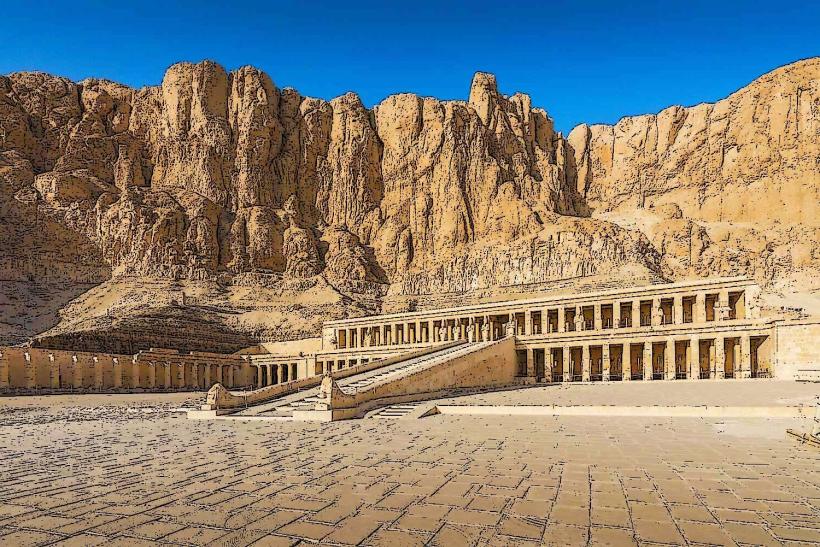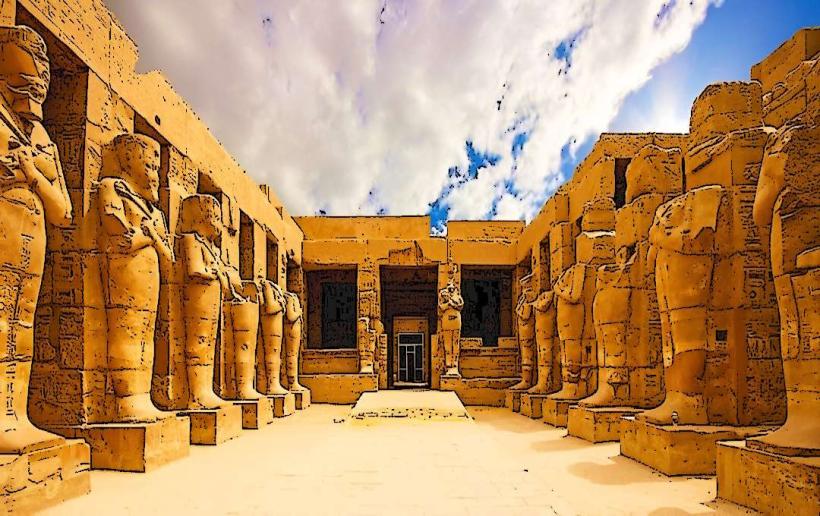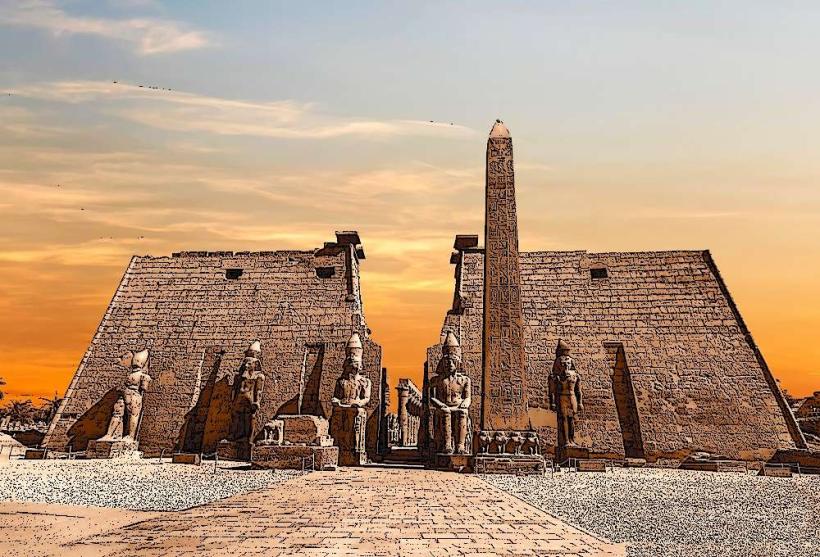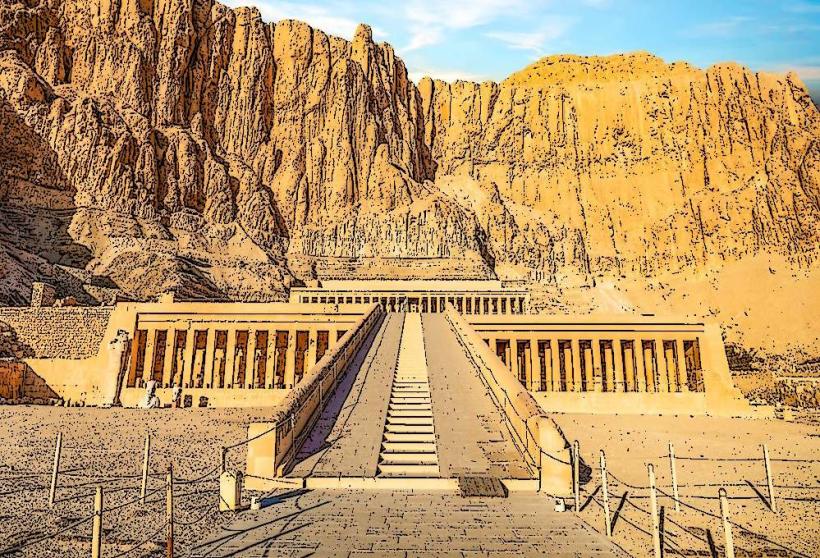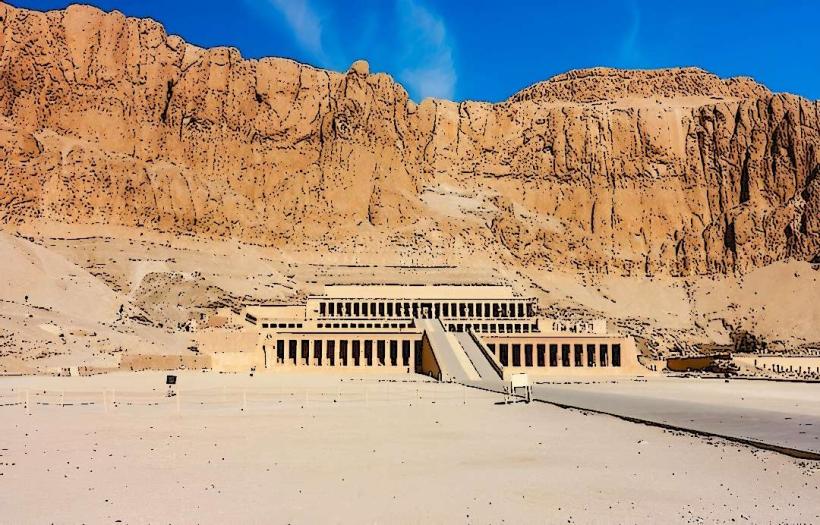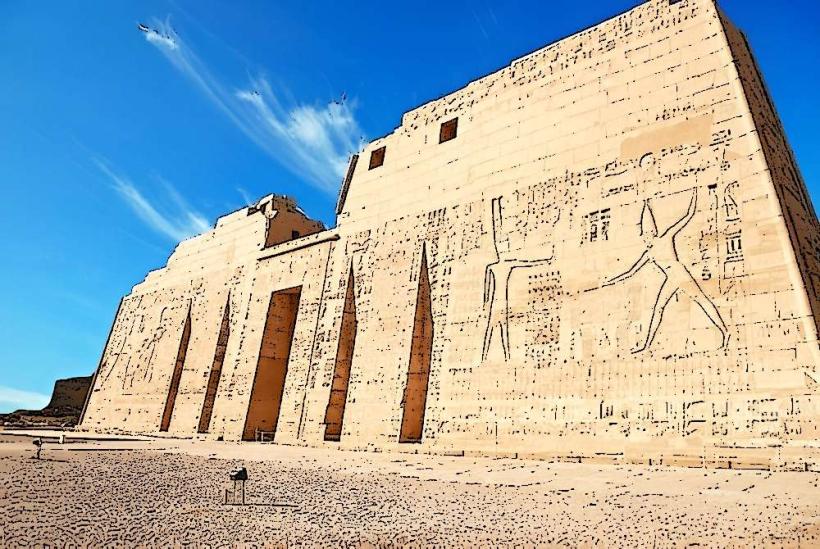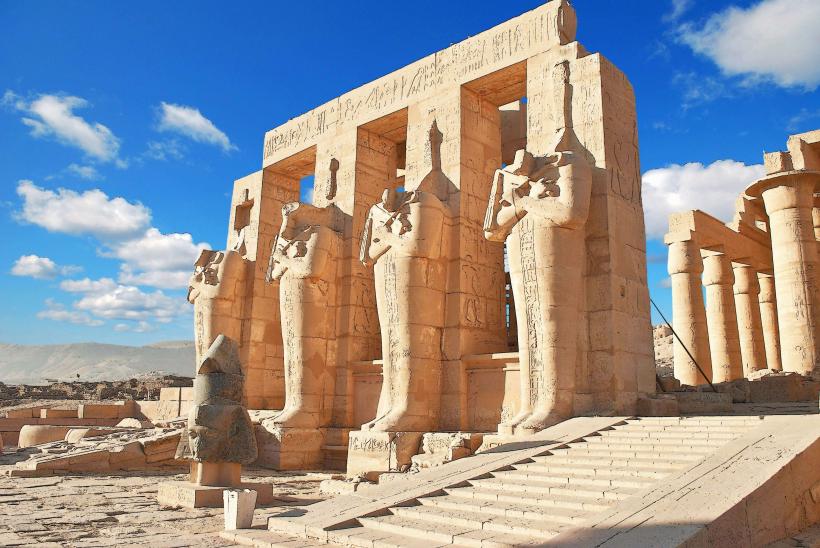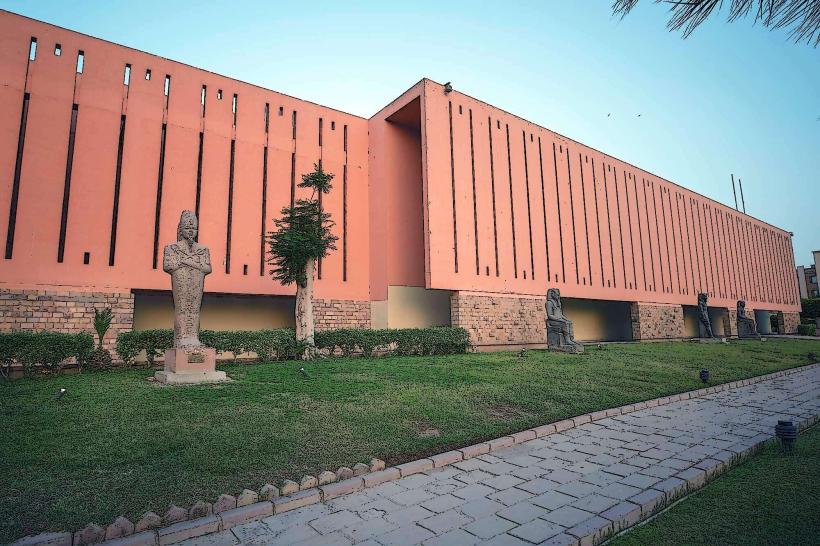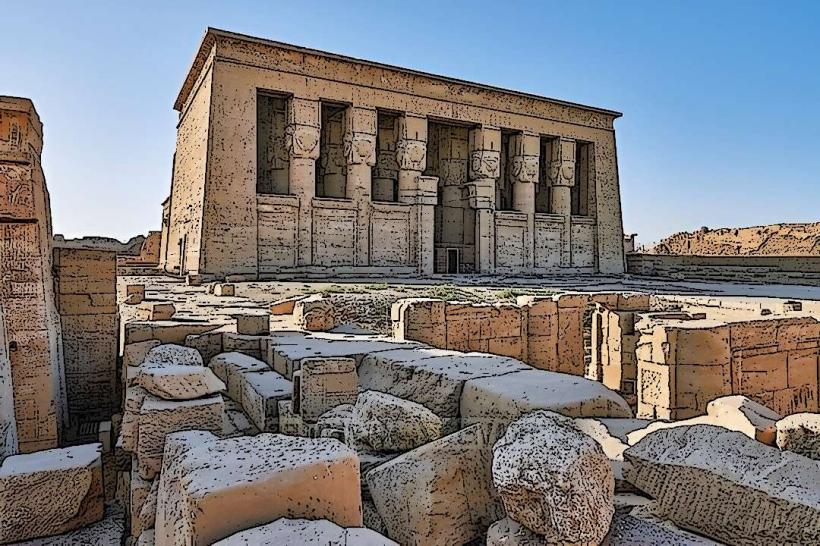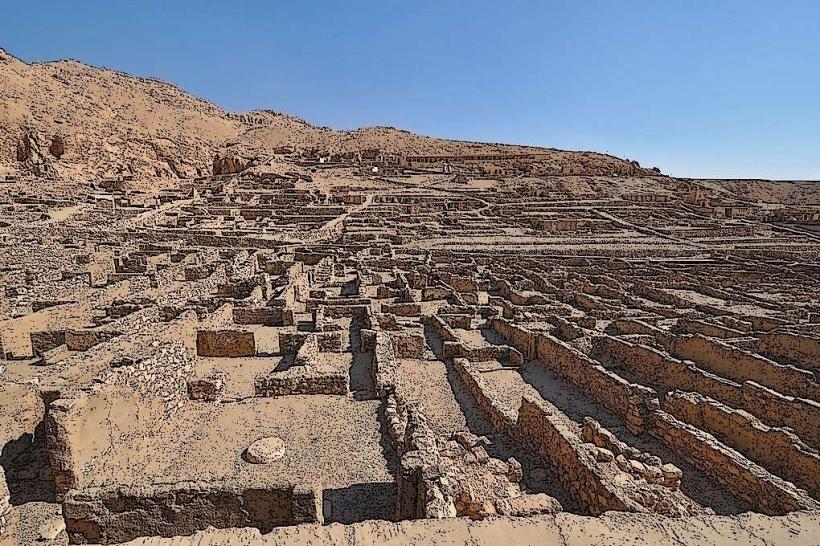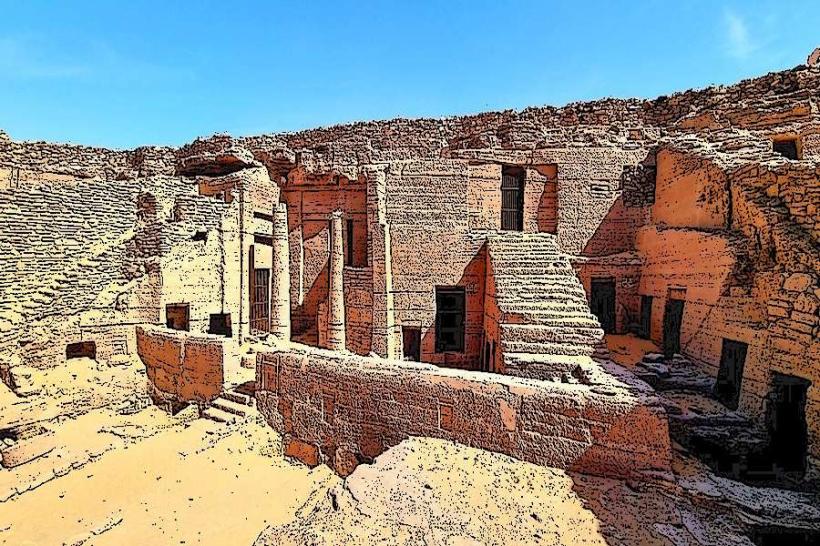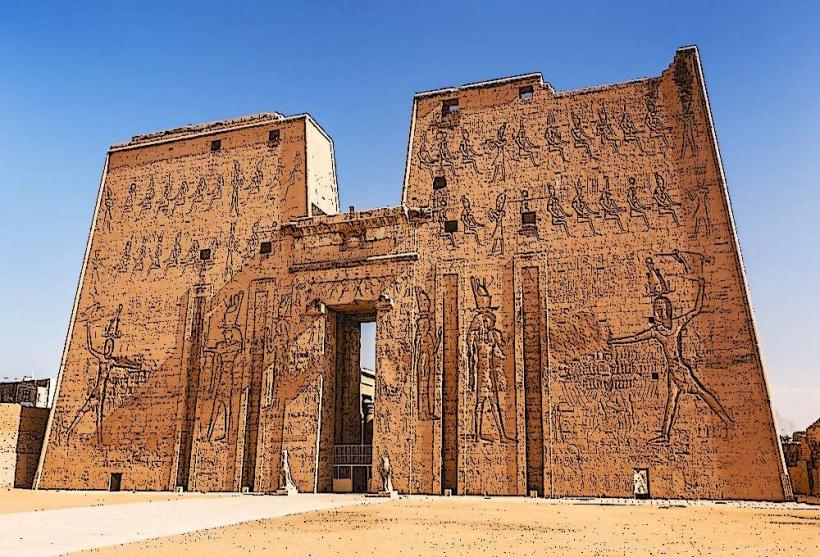Information
Landmark: Colossi of MemnonCity: Luxor
Country: Egypt
Continent: Africa
Colossi of Memnon, Luxor, Egypt, Africa
Overview
On the west bank of the Nile, near Luxor, two towering stone figures of Pharaoh Amenhotep III rise from the desert, their weathered faces staring toward the morning sun, to boot towering statues guard the front of Amenhotep III’s mortuary temple, a setting that once stretched wide in sun-baked stone, though centuries of wind and human hands have worn most of it away.As it turns out, People admired the statues not just for their towering height, but for the strange, flute-like tones they once gave off at dawn-sounds that tied them to Memnon, the fabled Ethiopian king of the Trojan War, and to the gods of Greece, simultaneously amenhotep III, the ninth pharaoh of Egypt’s 18th Dynasty, rose to power around 1390 BCE, when the Nile’s banks shimmered in the summer sun.To be honest, From 1391 to 1353 BC, he ruled in a time of peace and prosperity, when trade flowed easily and envoys carried messages between distant kingdoms, after that people remember him for the grand palaces he built and the careful diplomacy he maintained with the kingdoms just beyond his borders.The Colossi of Memnon once rose like silent sentinels at the gateway to Amenhotep III’s mortuary temple, a complex that, in its prime, sprawled across the desert as one of ancient Egypt’s largest and most dazzling wonders, in addition sadly, most of the temple has crumbled away, and now only two colossal statues remain, looming alone in the wind.Around 1350 BC, during Amenhotep III’s reign, workers raised the statues to stand like sentinels at his mortuary temple, their stone faces carved to show his power and hint at his divine nature, alternatively each Colossus towers about 18 meters-roughly the height of a six-story building-and tips the scales at nearly 700 tons.Carved from solid blocks of quartzite sandstone-a tough, pale stone that resists weather-the statues have endured for thousands of years, besides each statue shows Amenhotep III seated on a throne, hands resting heavily on his knees like stone weights, a pose that radiates strength, power, and command over Egypt.He’s shown wearing the tall white crown of Upper Egypt and a stiff ceremonial false beard, both clear emblems of a pharaoh’s power, while the statues bear engraved inscriptions on their pedestals, each one naming Amenhotep III and listing his titles in crisp, weathered lines.The ancient Greeks named the towering statues “Memnon” after the fabled Ethiopian king and Trojan War hero, imagining, as they stood before the sunlit stone, that they saw him captured in silent form, simultaneously in Greek myth, Memnon-son of Eos, the rosy-fingered goddess of dawn-fell to Achilles’ spear in the heat of the war.Long ago, people thought the statues could make strange sounds-sometimes a low moan, other times a haunting, almost musical note that drifted through the cool air at dawn, furthermore it was probably the mix of the rising sun and damp morning air that made the stone swell and shrink, sending out an eerie, low hum like a distant drumbeat.Travelers flocked to view the statues because of this strange “singing,” and ancient writers-among them Strabo and Pausanias-described the sound as if it rose from stone at dawn, therefore over the years, people began to believe the faint, mournful echo meant the statues wept for their beloved Memnon.Over the centuries, the Colossi of Memnon took a beating from nature, especially when earthquakes cracked and chipped their massive stone surfaces, as well as in 27 BC, a powerful earthquake shook the ground, toppling part of the statues and snapping one clean in half.They rebuilt the statue, yet you can still spot the cracks and chipped edges even now, in addition the statue now known as the “broken colossus” is the one most linked to the strange “singing” sound, like wind humming through a hollow shell, kind of Truthfully, The other statue, far less damaged, still stands upright, its base dusted with sand, besides the Colossi of Memnon hold great archaeological value, offering a glimpse into the towering grandeur and sacred purpose of Amenhotep III’s mortuary temple, where sunlight once lit the carved stone faces at dawn.You know, The temple may have crumbled away, but the statues still stand, weathered by centuries of wind and sun, as lasting reminders of Amenhotep III’s legacy, at the same time carved into the pedestals, the inscriptions tell us about Amenhotep III’s reign-his claim to divinity, the grand temples he commissioned, and the vast building projects that defined his rule.Truthfully, Today, the Colossi of Memnon still draw crowds, with travelers pausing in the warm desert air to stare up at the towering stone figures, furthermore they still rise from the desert like vast stone giants, proof of the ancient Egyptians’ genius for art and architecture, relatively These statues sit within the broader archaeological landscape around Luxor, not far from the Valley of the Kings and the sunlit terraces of Hatshepsut’s Temple, in turn the site has also become famous for its “singing” statues-a mystery that once made travelers pause in wonder at the soft, flute-like notes drifting through the air-and it still captivates both scholars and tourists today.Believe it or not, The Colossi of Memnon stand near Luxor, on the Nile’s west bank, just before you reach the sandy gateway to the Valley of the Kings, therefore getting here from Luxor is simple-you can drive yourself or join a guided tour, passing sunlit fields along the way.The Colossi stand close to other famous sights, like the sun-baked Valley of the Kings, the grand Temple of Hatshepsut, and the serene Valley of the Queens, not only that the Colossi of Memnon draw tourists in, making them a must-discover for anyone touring the region’s ancient monuments, especially when the morning light warms their weathered stone.In conclusion, the Colossi of Memnon stand as a stunning achievement of ancient Egyptian skill and a captivating chapter of history, where the precision of carved stone meets centuries of legend whispered through the desert air, in addition they’ve become enduring emblems of Amenhotep III’s rule, showing both his godlike stature and his grand accomplishments, while the tale of Memnon drapes them in a quiet, centuries‑classical mystery that still draws curious eyes, slightly often Millennia have passed, yet the Colossi still command awe, their stone faces holding the memory of one of Egypt’s greatest pharaohs.
Author: Tourist Landmarks
Date: 2025-09-20

